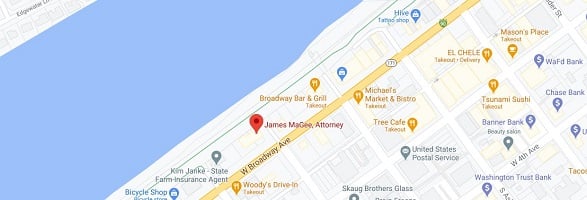Historically, it seems that many economic downturns have been accompanied by a good dose of anti-immigrant sentiment.
I ask that before you say, write, post, preach or think things for which you may someday be embarrassed, that you take a short moment to pause about the reasons for and origins of immigration.
People migrate. Every continent except Antarctica had natural migration. From wherever the craddle of homo sapien is ever found to be, we have moved and dispersed. Humans are very adaptable. As immigrants come to the United States, no amount of hate, border security or legislation is likely to dislodge them. Yes, they can adapt…but we can do.
With immigration comes a great opportunity. If you have a good or service, consider learning the immigrant’s language and reach out. You may be enriched both personally and financially.
Spanish is beautiful, and just a fun blast of a language to speak. Learn it…and embrace the inevitable hispanicization of America. Try it Mikey, you might like it!
This post focuses on The Economist artice at page 39 of the Decembert 18, 2010 edition covering the time period 12/18/10-12/31/10, entitled "Field of Tears". Economist articles are written and published without author attribution. However, whoever wrote these articles "gets it".
The story is of Teresa Vega and Marco Lopez, a married couple from Oaxaca, Mexico. They came to the United States illegally in 2005 when their oldest son died after a flood contaminated their town. They had no money to hire a doctor, so they watched their two year old son die as he vomited, got diarrhoea and ran a high fever. They left a child behind with his grandfather (little Erminio), as that child was too small to make the journey. It has not been nearly six years since either Ms. Vega or Mr. Lopez has seen Erminio.
Ms. Vega and Mr. Lopez failed three times before finally being able to cross the border on their fourth try. Ms. Vega endured the hardships of trying to cross notwithstanding her pregnancy.
On one try they were intercepted by bandits and stripped naked. Ms. Vega’s fear of rape was great, but with great relief, it never came to pass.
The hostile vastess of America provides its own challenge. 80% of America’s crop workers are Hispanic, and more than half are undocumented workers.
In contrast, however, Rob Williams director of the Migrant Farmworker Justice Project (which represents farmworkers in court) estimates that 90% of farmworkers are undocumented "illegal aliens".
It is not against the law in a criminal sense to be an illegal alien, so that term "illegal alien" is incorrect. It is a crime to cross the border illegally, but to be in the US without visa or "papers" is actually just a civil infraction, according to The Economist.
Many Americans are convinced that undocumented workers take jobs that American nationals would otherwise perform.
To disprove this notion, the United Farmworkers Union ran a promotion called "Take Our Jobs".
I have had the humble and sobering experience of being of assistance to families and singles as far north as Snohomish County and Whatcom County, and as far south as Clark County, Washington and Skamania County, Washington. Some of my clients speak Spanish. I have with pleasure helped many stressed-out people in Aberdeen, Hoquiam and Gray’s Harbor County, along with the Kitsap County area and the Key Penninsula; Tukwila, Washington; Lakewood, Washington; University Place, Washington; Puyallup, Washington; and Olympia, Washington; Federal Way, Washington; Bremerton, Washington; Gig Harbor, Washington; Silerdale, Washington; Bangor, Washington; and Tacoma, Washington. I have even had clients in and around Port Townsend, Jefferson County.
I have helped thousands of people since the mid-1990s.
It doesn’t matter where you are in Western Washington. I regularly help stressed-out people in a diverse number communities in and around the Puget Sound area of Washington, including but not in any way limited to Seattle, Washington, Everett, Washington; Renton, Washington, Kent, Washington and Auburn, Washington.
Don’t forget that it does not matter where the property is located in Western Washington, be it Bellevue, Olympia, Chehalis, Aberdeen, Olympia, Lacey, Graham, Puyallup, Orting, Fife, Milton, Edgewood, Pe Ell, Raymond, Onalaska, Tenino, Tumwater, Chehalis, Centralia, Gig Harbor or Tacoma., I can often be of foreclosure and/or short sale assistance. I offer a brief, thirty minute no obligation/no cost obligation. You have nothing to lose!
Remember, in Western, Washington, I am here to help you, regardless of where you are facing a foreclosure or short sale, be it Federal Way, Washington; Lakewood, Washington; University Place, Washington; Puyallup, Washington; Graham, Washington; Orting, Washington; Spanaway, Washington; Lacey, Washington; Burien, Washington; Seatac, Washington; Des Moines, Washington; Bremerton, Washington; Silverdale, Washington; Tacoma, Washington; Renton, Washington; Auburn, Washington; Tukwila, Washington; Federal Way, Washington; Renton, Washington; Auburn, Washington; Tukwila, Washington; Kent, Washington; Bremerton, Washington; Silverdale, Washington; or Olympia, Washington.


